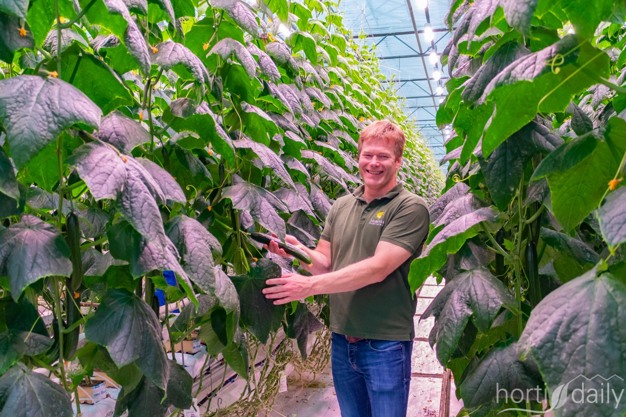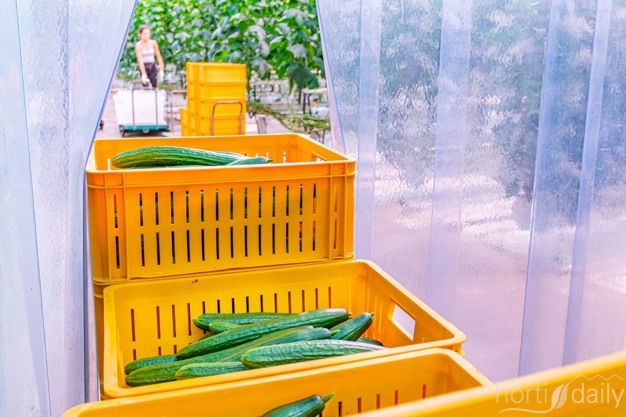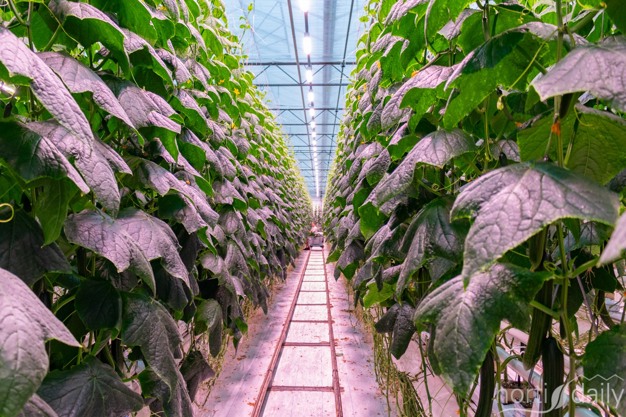"We have contracts based on volume and in the winter, prices are fixed for a good part of the production but we also collaborate with other growers to project the cucumber supply for the coming weeks then make price recommendations," says Kristian Solbergs, Chief Executive Officer of Solbergs Gartneri. Solbergs Gartneri AS is a third-generation greenhouse located in Vettre, Norway and currently run by Kristian Solberg. The greenhouse produces 7% of Norway's cucumber production.
 Kristian Solberg
Kristian Solberg
Norwegians eager for local greenhouse commodities
When it comes to competing against produce from Spain and the Netherlands, Kristian notes that most Norwegian consumers are willing to pay slightly higher prices for local produce, as imported cucumbers arrive on supermarket shelves paler and softer than locally grown cucumbers.
"In general, Norwegians are eager to buy Norwegian products and support the local industry. Oslo is sometimes an exception as consumers in the capital region are more focused on the price, especially with the energy crisis and high interest rates which are cutting into household budgets," says Kristian.
While snack cucumbers are increasingly popular in multiple markets around the world, Kristian notes that these haven't taken a big market position in Norway as consumers have not had a great experience with snack cucumbers. The Norwegian market thus focuses on long English cucumbers, with a preference for somewhat smaller cucumbers than are typically grown in the Netherlands and Germany.
"The biggest difference with the Netherlands is that our market wants cucumbers around 300-350 grams, whereas Dutch and German cucumbers are typically larger. Some seed companies find this too small, so we do a lot of variety testing to find those smaller varieties," Kristian notes.
 Cucumbers ready for packaging
Cucumbers ready for packaging
Electricity prices a burden to Norwegian growers
The energy crisis also dictates how the greenhouse operates, with many growers on a 'spot market' where they are paying based on live prices which are changing hour to hour. Gasprices in Norway are higher compared to the Netherlands and other countries, Kristian points out. "Gas is often more expensive than electricity. Using oil is banned from 2025 and the government now also want to stop using gas for heating the greenhouses. All in all the Norwegian greenhouses are 70% run on renewable energy."
"Sometimes you can get paid for using electricity, other times you have to pay two Norwegian Krone per kWh (roughly 0.18 USD or 0.17 EUR per kWh). You can also buy energy certificates or sign power purchase agreements to hedge and secure your price, but that isn't always balanced either," explains Kristian.

And while Norway is recognized for its green energy initiatives, these sometimes fall short and can disadvantage users. For example, the government began supplying electricity to oil installations in the North Sea to reduce natural gas use by the industry. This is costly and drains the mainland of green energy: all to supply oil platforms that then eventually import the fossil fuel energy back to the mainland. This, as Kristian notes, is somewhat hypocritical and puts residential users and mainland industries at a disadvantage.
"The price of producing is increasing massively, so Norwegian growers have to be as practical as possible, focus on improving energy efficiency in the greenhouse and lobby the government to support local products," says Kristian.

For more information:
Solbergs Gartneri AS
Kristian Solbergs, CEO
[email protected]
